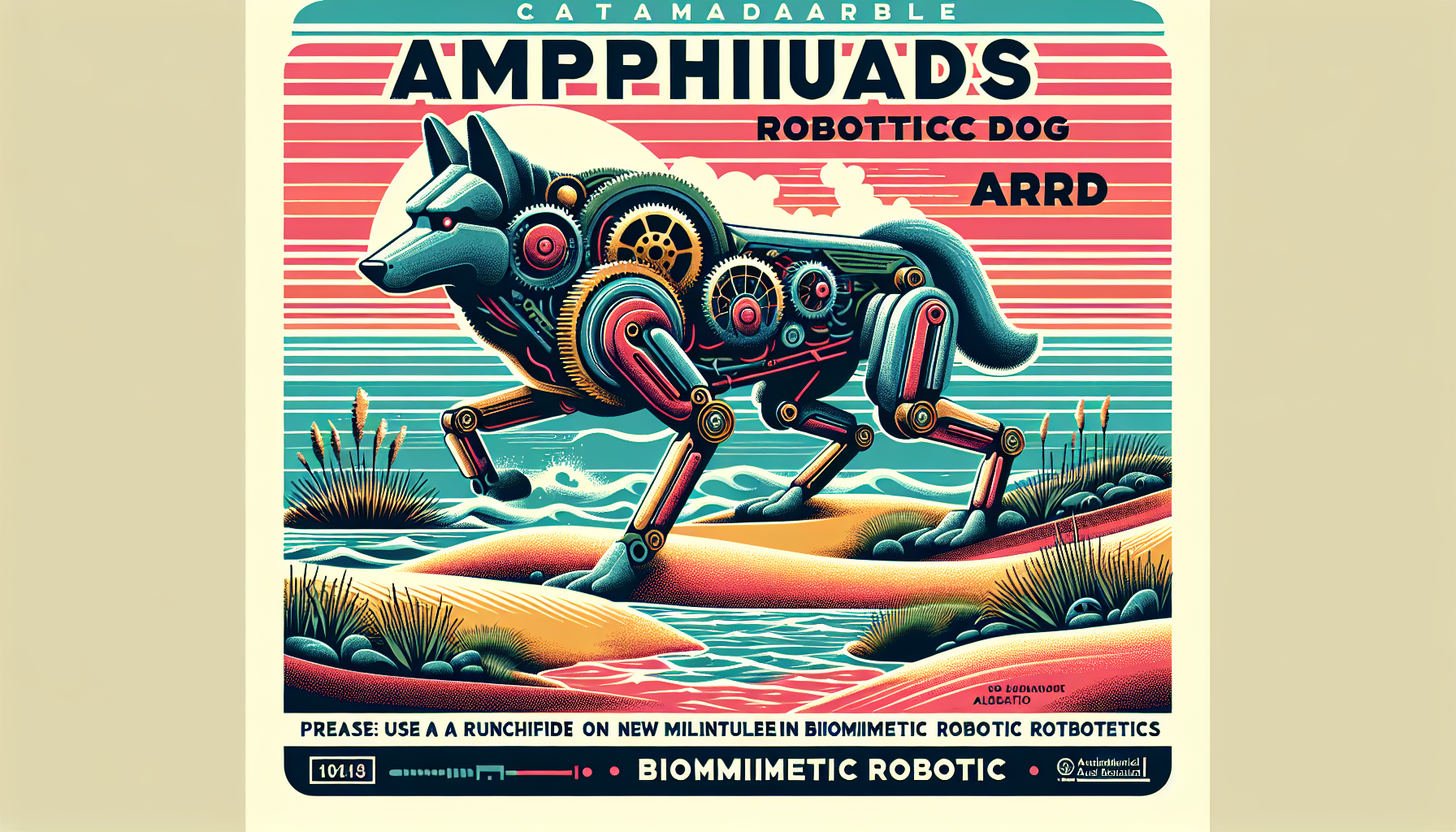A remarkable breakthrough in robotics has arrived: the Amphibious Robotic Dog (ARD). Created by a team of dedicated researchers, this invention brings a new level of freedom and capability to robots, allowing them to move with confidence both on land and in water. This achievement stands out as one of the most significant milestones in the field of biomimetic robotics. Until now, most amphibious robots were modeled after reptiles or insects and faced challenges in handling the wide variety of conditions found in natural environments. The ARD changes this narrative, setting a new standard by turning to the movement of mammals for inspiration.
Inspired by Nature
The ARD’s design is rooted in close observation of real dogs as they walk and swim. Dogs are known for their adaptability and graceful movements both in water and on land. By studying how dogs use their limbs and how they distribute their weight, the research team developed a robot that mimics these same mechanics. Central to its success is a double-joint leg structure, which gives the ARD a flexible and powerful way of moving. This structure allows it to paddle through water using motions modeled on a dog’s swimming style, while also enabling it to walk steadily and strongly on solid ground.
To ensure smooth movement in water, the researchers carefully balanced the robot’s weight and designed its body for proper buoyancy. This means the ARD stays stable and level as it moves, avoiding common robotic pitfalls like tipping or getting stuck. Every detail, down to the positioning of its motors and joints, was crafted with the intent to merge land agility with aquatic reliability.
Mastering Movement: Paddling Gaits
The true strength of the Amphibious Robotic Dog lies in its ability to switch between several different ways of moving, known as paddling gaits. These gaits were not chosen at random; each was honed through careful research and testing. The ARD has three primary water gaits:
- Two “doggy paddle” gaits, modeled on the classic swimming motion, which focus on achieving the highest possible speed and propulsion.
- One trot-like gait, designed for situations when stability matters more than speed.
Tests revealed impressive results. When set to its fastest doggy paddle gait, the ARD can travel through water at about 0.576 kilometers per hour. When stability is a priority, it switches to the trot-like gait, moving a bit slower but maintaining exceptional balance. On land, the robotic dog reaches up to 1.26 kilometers per hour, demonstrating its competence on both sides of the water’s edge.
Broad Impact and Potential Uses
This innovation opens new possibilities for many fields. The ARD’s unique capabilities make it a promising tool for:
- Environmental research — exploring lakes, rivers, marshes, and forests while gathering valuable data without disturbing the setting.
- Military and surveillance — conducting agile and discreet reconnaissance where both water and land travel are needed.
- Search and rescue — reaching areas that are flooded or otherwise hard to access in emergencies, helping to save lives.
The secret to its success is not just in movement but in planning. The ARD’s ability to smoothly transition from walking to swimming, and back again, comes from advanced algorithmic trajectory planning inspired by animal motion. This allows the robot to choose the best path and gait for any situation, maximizing its efficiency and resilience.
A New Chapter for Robotics
By capturing the essence of how dogs navigate the world, the Amphibious Robotic Dog brings us closer to a future where robots can handle the unpredictable challenges of nature as easily as living creatures can. This work doesn’t just push technology forward — it shows the profound ingenuity that comes from observing and learning from the natural world. The research lays a foundation for designing the next generation of quadruped robots, expanding their role in society and showing what is possible when we follow nature’s example with respect and care.

Leave a Reply